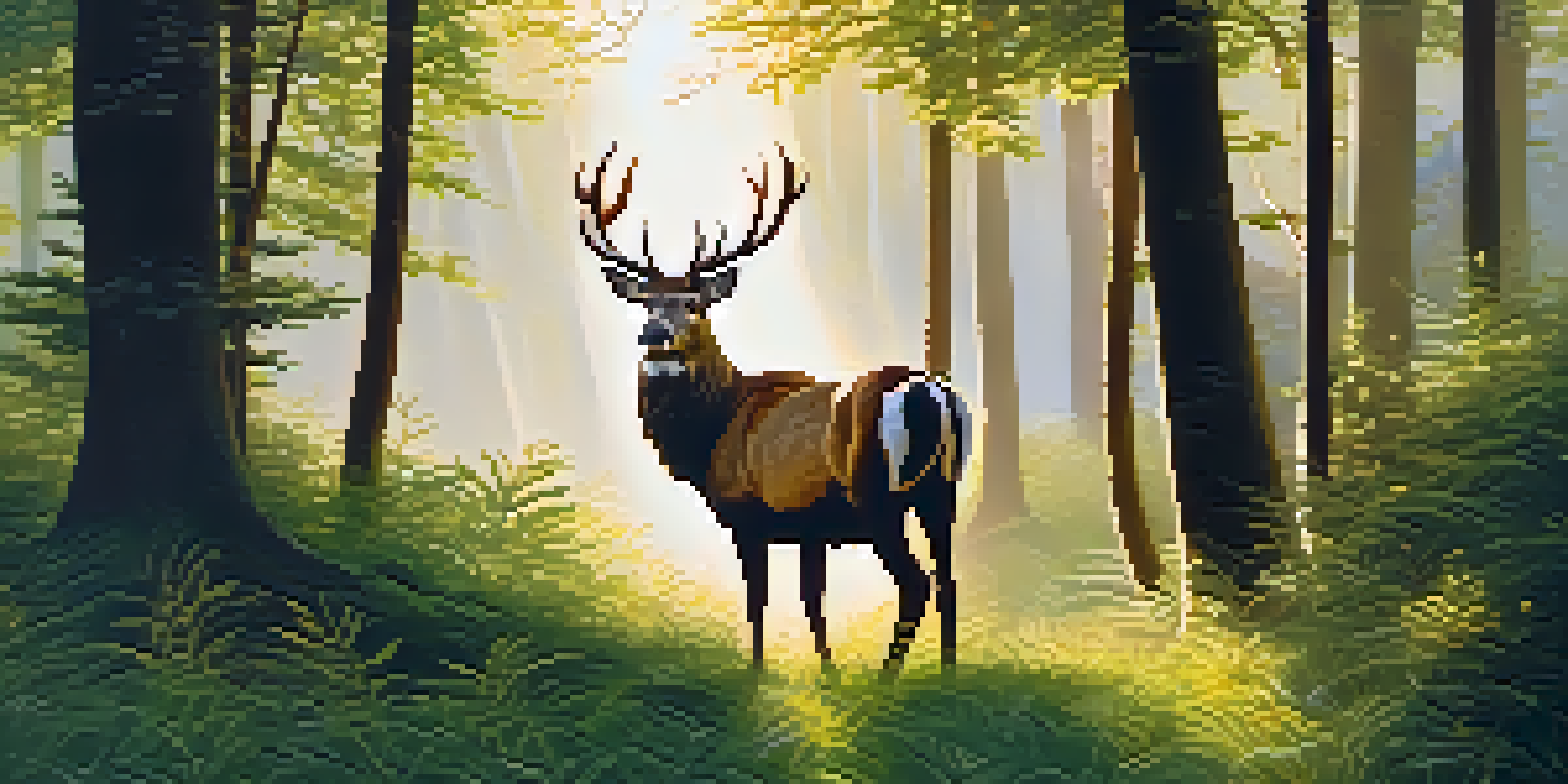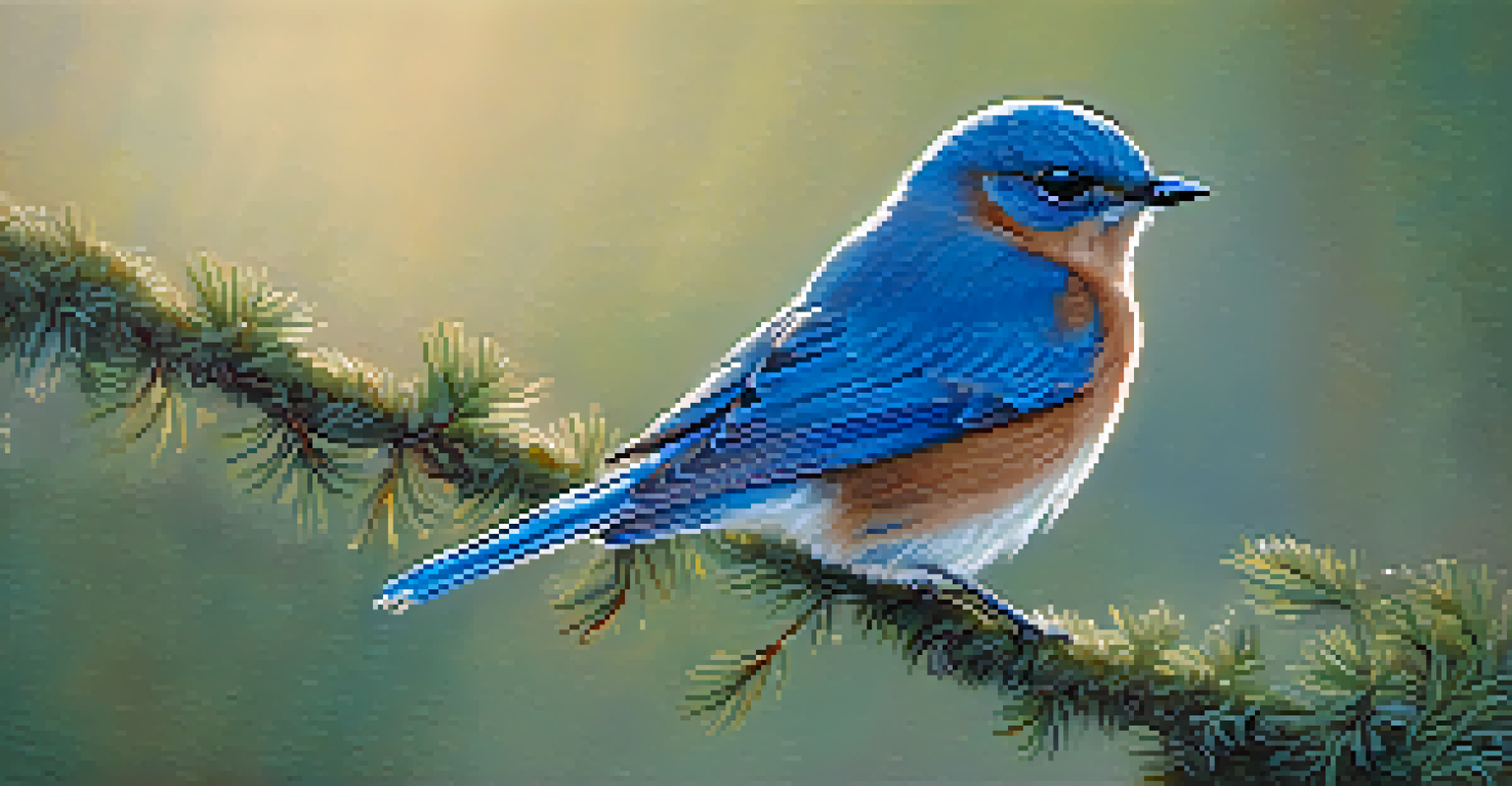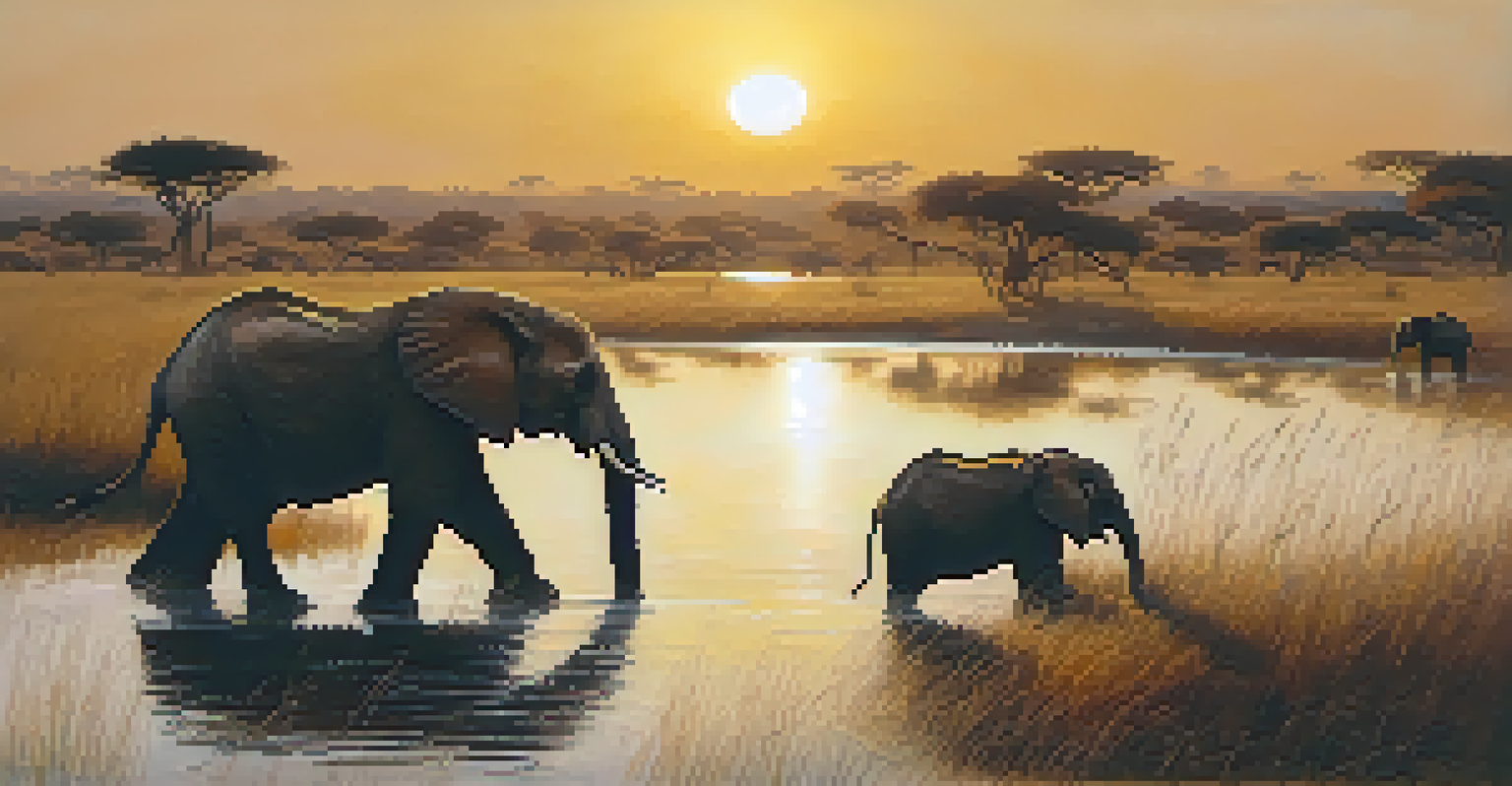Using Natural Lighting for Stunning Wildlife Images

Understanding the Importance of Natural Light in Photography
Natural light plays a vital role in photography, especially in wildlife images. It can dramatically enhance the colors, textures, and mood of your photos. Unlike artificial lighting, which can sometimes create harsh shadows or unflattering tones, natural light offers a softness that often brings out the best in your subjects.
The best thing about a picture is that it never changes, even when the people in it do.
Wildlife photography thrives on the unpredictability of animal behavior, and capturing those moments requires an understanding of how light interacts with your environment. The golden hours—just after sunrise and before sunset—are particularly magical times for photography, as the light is warm and diffused, creating stunning images.
When planning your wildlife shoot, always consider the direction and quality of light. The right lighting can turn an ordinary scene into something extraordinary, giving your wildlife images that professional touch.
Choosing the Best Time of Day for Wildlife Photography
Timing is everything in wildlife photography, and the best times to shoot are during the golden hours. This is when the sun is low on the horizon, providing a soft, warm glow that makes colors pop. Animals are often more active at dawn and dusk, making it an ideal time to capture them in their natural habitat.

Midday sun can be tricky, as its harshness can create unflattering shadows and overly bright highlights. If you find yourself shooting during this time, look for shaded areas or consider photographing animals near water, where the reflection can help soften the light.
Natural Light Enhances Wildlife Photos
Utilizing natural light, particularly during golden hours, can dramatically improve the colors and mood of your wildlife photography.
Remember, wildlife doesn’t adhere to our schedules, so patience and flexibility are key. Sometimes, the perfect shot may require waiting for the right moment when the lighting aligns with animal behavior.
Using Reflectors to Control Natural Light
Reflectors can be a game-changer in wildlife photography, helping to manipulate natural light to your advantage. They bounce light back onto your subject, filling in shadows and creating a more balanced exposure. A simple white reflector can make a significant difference, especially in the early morning hours when the light is soft.
Photography is the story I fail to put into words.
You can easily create your own reflectors using materials like cardboard or aluminum foil, making them budget-friendly options for enhancing your images. Experimenting with different angles and distances can yield varied results, so don’t hesitate to try out different setups.
While using reflectors, be mindful of your surroundings. Animals can be skittish, so approach slowly and quietly, allowing you to capture stunning images without disturbing their natural behavior.
Shooting in Shaded Areas for Soft Light
Finding shaded areas can be a fantastic way to capture wildlife without the harsh glare of direct sunlight. Under trees or near rocky outcrops, the dappled light creates beautiful patterns and textures, adding depth to your images. This soft light is particularly flattering for close-ups of animals.
When shooting in the shade, pay attention to how the light filters through the leaves or branches. This can create interesting shadows and highlights, giving your photos a unique and artistic feel. It's a great technique for showcasing the intricate details of fur or feathers.
Timing is Key for Wildlife Shooting
Capturing wildlife at dawn and dusk maximizes your chances of seeing active animals and achieving the best lighting for your shots.
However, be cautious of the background in shaded areas, as it can sometimes be cluttered. Keep an eye out for distractions that could pull focus away from your subject, ensuring your wildlife images remain the star of the show.
Adjusting Camera Settings for Optimal Light Conditions
When working with natural light, adjusting your camera settings is crucial to achieving the best results. Start by setting a wide aperture to let in more light, which can create a beautiful depth of field, blurring the background and emphasizing your subject. A low ISO setting can also help reduce noise in your images.
Shutter speed is another important factor to consider, especially when photographing animals that may move quickly. A faster shutter speed can help freeze action, while a slower speed might be suitable for more stationary subjects. Make sure to strike a balance that suits your shooting conditions.
Always review your images on the spot and make necessary adjustments. Keeping an eye on the histogram can help you gauge exposure and ensure you’re capturing the best possible wildlife shots.
Utilizing Backlighting for Dramatic Effects
Backlighting can create stunningly dramatic wildlife images by illuminating your subject from behind. This technique highlights edges and details, often resulting in a captivating silhouette effect. It’s particularly effective during sunrise or sunset when the sun is low and golden.
When using backlighting, consider positioning yourself so the light creates a halo effect around your subject. This can add a magical quality to your images, making them truly stand out. Just be mindful of your exposure settings, as backlighting can sometimes lead to underexposed subjects.
Post-Processing Enhances Images
Post-processing techniques, such as adjusting brightness and contrast, can significantly enhance the effects of natural light in your wildlife images.
Experimenting with backlighting can result in unique compositions that showcase the beauty of wildlife in a different light. It encourages creativity, pushing you to think outside the box and capture images that tell a story.
Post-Processing Tips for Enhancing Natural Light Images
Once you’ve captured your wildlife images, post-processing can further enhance the effects of natural light. Simple adjustments to brightness, contrast, and saturation can make a world of difference. Software like Lightroom or Photoshop allows you to fine-tune these aspects seamlessly.
Pay attention to the shadows and highlights in your images. Sometimes, lifting shadows can reveal details that were hidden, while adding a touch of contrast can make your subject pop. The goal is to maintain the authenticity of the natural light while enhancing the overall impact of the image.

Lastly, don’t hesitate to crop your images for better composition. A well-framed shot can help draw attention to your wildlife subject and make your images more compelling.